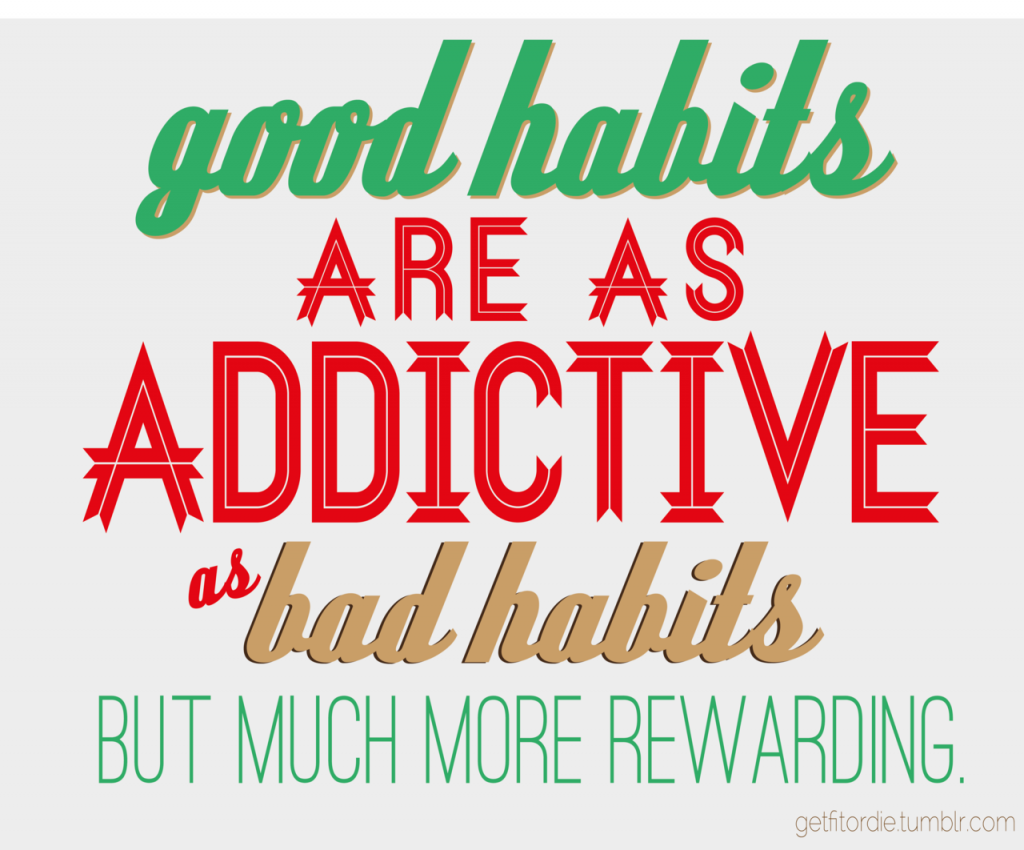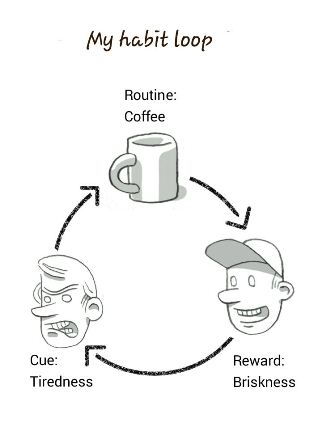Getting Ready for New Year Resolutions?
New year is less than three months away. We will soon be drawing up our list of goals, aspirations, resolutions and hope this year would be different. But like Einstein said,
“Its Insanity to expect a different result when you do the the same thing over and over”
Changing an habit is hard. 21 days of will power is not going to magically get you over the hump. So what will?

3 Steps to Change an Habit
Habits are created by neural connections. So when you want to overcome a old habit, you cannot wish it away. You have to re-program your brain and by pass the old neural connection.
Step 1: Identify the trigger
Step 2: Identify the Reward
Step 3: Create a new routine to reach the same reward
There could be three triggers for a habit : Time, space or matter/context.
Habits that I want to Change:
Context
Habit 1: Having fried snacks in the evening.
Trigger 1: Context – Hunger
Reason 1: Easily available food in cafetaria
Reward 1: Hunger Fulfillment
Alternative 1: Store a healthy snack at my desk
Space
Habit 2: Checking social media in the morning
Trigger 2: Space Phone in the bedroom
Reason 2: Boredom. Trying to get the sleep out of eyes.
Reward 2: Getting out of the bed.
Alternative 2: Use Virtual assistant to play Suprabatham when I am still half-awake
Time
Habit 3: Passive smoking in the Evening 5 PM breaks
Trigger 3: Time – Breaks
Reason 3: Hanging out in smoke breaks becomes a reason to bond over office gossip
Reward 3: Social Get together
Alternative 3: Water Cooler Conversation/Bonding over a walk/run around the campus
The above examples had the context, space and time triggers respectively.

In a habit construct, it becomes difficult to impossible to find out the reason or even reward associated with a habit. So to engineer the habit change, you need to experiment with changing one thing in the sequence to see if the change gives the same reward as the original habit without the negative consequence.
Lets go back to the evening fried snacks habit and see what alternatives I could try to understand the reason and reward in the loop.
Breaking Down of the Habit : Various Iterations
Is it to hangout with friends in the evening? No. I prefer finishing my break quickly and coming back to my desk.
Is it to get off the work for a while? Does getting off the seat to grab a drink or a short walk give the same fulfillment? Probably
Does having a snack at my desk give the same fulfillment? Not really
Am I hungry? Any food even at desk fulfill that craving? Not really
Is fried food craving caused by a deficiency of essential fatty acids? So does a snack of peanuts or avocado give the same fulfillment? Yes to an extent.
With the few experiments above, I can conclude that I have a essential fatty acid craving together with craving to get away from work for while. So I can get off my desk, go out and have a peanut chat or a fried/boiled peanut snack from the vendor outside.
Keystone Habits
Keystone Habits are those that cause a positive change in numerous other related things in life. The central idea of a keystone habit is one that makes you feel good about yourself, creates a positive self-image which helps you take better decisions. some examples of Keystone Habits are:
Exercising – Regular exercise also makes one eat better, wake up early.
Noting Down Expenses – This automatically causes one to reduce expenses and save more
Plan your day – Planning a day makes you more organised and as a result get more work don.
Suggested Read
Charles Duhigg, discusses in detail about the ‘Power of habits‘ in influencing us. Habits can be your friend and help you achieve that goal easily rather than your enemy. If you are intrigued by this topic, you would find that book a fascinating read. If you are more specifically interested in the digital distractions, you may find ‘Hooked‘ by Nir Eyal of specific interest.
Conclusion
Before you write a resolution and hope to follow it through sheer will power, follow the process above to understand the components of your habit – trigger, reason, reward and experiment to see how you can short circuit to the reward by changing the process or getting there.
New year resolutions will probably turn out to be easier than you think if you follow the process. May 2019 be what you hope it to would be for you.